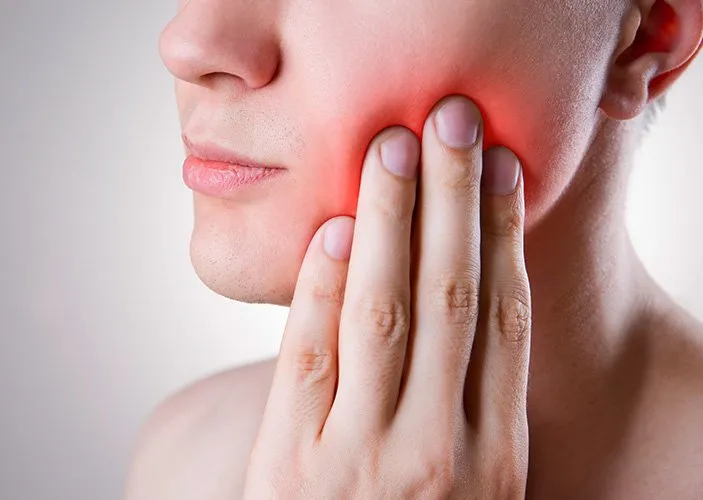One-Spot Gum Woes: Unveiling the Culprits Behind Localized Gum Pain
Experiencing gum pain in a specific spot can be alarming. Unlike generalized soreness, localized pain often indicates a specific issue. This comprehensive guide delves into the various reasons why your gums might hurt in one spot, explores potential solutions, and offers preventive tips for long-term gum health.
Beyond Brushing: Unveiling the Root of Localized Gum Pain
While neglecting oral hygiene can contribute to gum problems, localized pain often points to a more specific issue. Here are some common culprits behind gum pain in one spot:
- Gingivitis: This is the mildest form of gum disease, characterized by inflammation and irritation of the gums. While gingivitis can cause generalized gum sensitivity, it can also manifest as localized pain, especially around a specific tooth.
- Periodontitis: If left untreated, gingivitis can progress to periodontitis, a more serious gum disease that damages the tissues and bone supporting your teeth. Periodontitis can cause localized pain, swelling, and potential gum recession (where the gum tissue pulls away from the tooth) around specific teeth.
- Abscess: An abscess is a pus-filled pocket that forms due to a bacterial infection. Dental abscesses can develop around the root of a tooth and cause significant pain, swelling, and tenderness in the surrounding gum tissue. An abscessed tooth is often the culprit behind throbbing or pulsating pain in a specific spot.
- Food Impaction: Small food particles can become lodged between your teeth or underneath the gum tissue, causing irritation and localized pain.
- Trauma: Accidental injury to the gums, such as from aggressive brushing, flossing, or biting down on a hard object, can cause localized pain and swelling in the affected area.
- Canker Sores: These small, painful ulcers can develop on the gum tissue and cause localized discomfort. Unlike cold sores, canker sores don’t appear on the lips and aren’t contagious.
- Emerging Tooth (Teething): For children and infants, localized gum pain can be a sign of an emerging tooth pushing through the gums.
Diagnosis and Treatment: Seeking Solutions for Your Specific Case
Since the cause of localized gum pain can vary, consulting your dentist is crucial for proper diagnosis and treatment. Here’s what to expect:
- Examination: Your dentist will examine your teeth, gums, and mouth for signs of inflammation, infection, or other issues.
- X-rays: X-rays might be used to visualize the underlying bone structure and assess the health of the tooth roots.
- Treatment: The treatment plan will depend on the underlying cause. For gingivitis, improved oral hygiene practices and professional cleaning might suffice. Periodontitis might require more intensive treatment, including scaling and root planing (deep cleaning) or even surgery in severe cases. Abscesses typically require antibiotics and potentially root canal treatment to eliminate the infection. Food impaction can often be resolved with careful flossing or professional removal by a dentist.
Finding Relief: At-Home Strategies for Gum Pain
While professional treatment is essential for addressing the underlying cause, here are some strategies to manage discomfort at home:
- Warm Salt Rinses: Dissolve half a teaspoon of table salt in a glass of warm water and gently rinse your mouth several times a day. This can help reduce inflammation and promote healing.
- Over-the-Counter Pain Relievers: Pain relievers like ibuprofen or acetaminophen can help manage discomfort.
- Cold Compress: Applying a cold compress to the outside of your cheek near the affected area can help reduce swelling and pain.
Preventing Localized Gum Pain: Strategies for Long-Term Gum Health
By following these practices, you can significantly reduce your risk of localized gum pain and promote overall oral health:
- Maintain Excellent Oral Hygiene: Brush your teeth twice a day for two minutes each time, using a soft-bristled toothbrush and proper technique. Floss daily to remove plaque and food particles from between your teeth.
- Regular Dental Checkups and Cleanings: Schedule regular dental checkups and cleanings, typically every six months. This allows your dentist to identify and address potential problems early on.
- Balanced Diet: A balanced diet rich in fruits, vegetables, and whole grains provides essential nutrients for optimal oral health. Limit sugary foods and drinks, as they can contribute to plaque buildup and gum inflammation.
- Manage Stress: Chronic stress can weaken your immune system and make you more susceptible to gum problems. Practice stress-reduction techniques like meditation or yoga.
- Don’t Smoke: Smoking is a major risk factor for gum disease and can worsen existing gum problems.

